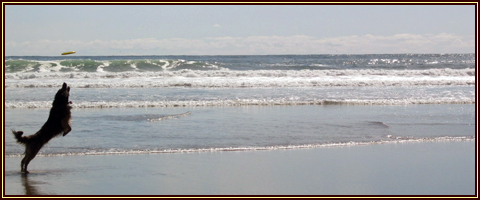Tips On Aquarium Care And Cleaning
Thursday, October 27th, 2011
Tips on Aquarium Care and Cleaning
Tips on Aquarium Care and Cleaning
The proper care in addition to cleaning of your aquarium is the most focal consequence~of great magnitude~of the essence}, in spite of everything most overlooked aspect of owning an aquarium. With the avoiding the care with maintenance of a fish tank, not only will it lose the visual appeal, but your fish will be unhealthy plus unhappy. From the following a daily, weekly in addition to monthly care program, you will maintain a beautiful, clean as well as healthy aquarium.
Daily Cleaning Routine
To maintain a clean aquarium, there are some daily tasks that must be done. Originally plus foremost, it’s key consequence~of great magnitude~of the essence} to check the temperature of the tank as well as make sure it stays consistent. For tropical freshwater fish, the temperature should average at around 77 degrees. Too much heat in your aquarium will promote the growth of algae. Always check for sick or dead fish daily. If you have a sick fish, it should be removed with the tank immediately or it may harm the other inhabitants of the aquarium. Lastly, check that the pump in addition to filter are functioning properly.
Weekly Cleaning Routine
Weekly maintenance is necessary to keep the tank healthy. On a weekly basis, any waste should be removed with the surface of the gravel at the bottom of the tank. Using a siphon tube will accomplish this. If water is removed during this process, be certain to replace it in addition to keep the water on the tank at the same level. Add chemicals as well as chlorine weekly so the balance within the tank remains the same. At this time, it is best to test the water for the ammonia along with nitrate levels. Don’t overlook testing the pH of the water as well. If you are raising live plants, tend to them each week. Trim them back if they are getting too big, with remove any dead or sick leaves. Re-anchor as well as latest sprouts into your gravel. Also, check your tank for snails. You can remove snails from the floating a piece of lettuce leaf usually in the tank. The snails will be involved to the lettuce, in addition to you can remove them using a net.
Monthly Cleaning Routine
Finally, some monthly steps will assure that your aquarium stays clean with healthy. A partial water change should be performed each month. Using a siphon hose, remove 20 to 25 percent of the water by the tank. Always make definite that your chemical balance is correct. High levels of chlorine plus ammonia will cause death. Cleaning the filter should be a monthly role plus changing the filter cartridge. Be positive not to clean the filter too thoroughly as it contains helpful bacteria that aids in stabilizing the chemical balance on the tank. In the monthly cleaning, scrape and remove all algae with the surface of the tank. If you find you are having a weighty consequence~of great magnitude~of the essence} amount of algae, consider adding an algae eater to the tank. Should you already have one, be positive to keep an eye in the temperature of the tank with you may also want to limit the time in which a light is used. Any increased heat source will speed up the production of algae inside the aquarium. If your tank is located in direct sunlight in addition to you are having an algae problem, it is best to relocate the tank.
By the following a maintenance schedule, you’ll be confident to keep a clean, clear plus healthy tank. Aquarium care is essential consequence~of great magnitude~of the essence} as well as must be performed mostly to ensure the long in addition to happy life of your fish. Provide yourself with an aquarium to be proud of from the keeping up and the care with cleaning.
http://www.zdogpark.com/Dog_Breeds/Toy_Dogs/Shih_Tzu/
http://www.zdogpark.com/Dog_Breeds/Toy_Dogs/Silky_Terrier/
http://www.zdogpark.com/Dog_Breeds/Toy_Dogs/Toy_Fox_Terrier/







